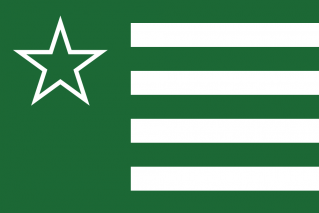[Please Note: That the content is outdated and is most likely incorrect. A new thread is being created. Please be patient when the overhaul is being completed.]

The Federative Noocracy of Solm
The Official Factbook: Compiled by the Borough of Information
Contents
- I. Etymology
II. History
III. Geography
- 3.1 Terrain
3.2 Flora
3.3 Fauna
3.4 Climate
- 4.1 Overview
4.2 Dynamics of the Borough
4.3 Method of Selection
4.4 Assembly of the Perspicacious
4.5 Foreign Relations
- 5.1 Army
5.2 Air Force
5.3 Navy
5.4 Marines
- 6.1 Sectors
- 6.1.1 Income and Human Development
6.1.2 Science and Technology
6.1.3 Transportation
6.1.4 Trade
- 7.1 Language
7.2 Religion
7.3 Statistics
7.4 Education
7.5 Health
7.6 Crime and Law Enforcement
- 8.1 Literature
8.2 Cuisine
8.3 Sports
8.4 Architecture
- 8.4.1 Modern Architecture
Solm, officially the Federative Noocracy of Solm (Corv: La Federative Noocracy de Solm), also referred to as the Federative Noocracy, the Solmian State, or simply Solm, is a noocracy encompassing seven provinces. The nation is positioned in center Judea, bordering Ewa Beach to the northwest, its closest ally, Hobit to the north, the Judean Sea to the west, and the Tulgian Sea to the east.
With over 3 Billion people, the Federative Noocracy of Solm is among the most populous nations in Judea, and among the largest countries by total land area in the region. Solm is a diverse nation with a rich cultural history. Solm devotes large resources towards its economy, attempting to establish the Solmian nation as a major economic market in the region.
The Native Indigenous populations of Corv descent began to populate, what is currently the Solmian mainland, over five thousand years ago. The indigenous population of Solm was severely depleted by the arrival of the Phoenixian explorers around 1100 C.E. The Federation of Solm was installed in 1226 C.E., following the final battle of Corv. The Federation would survive though the hardships. One hundred years later, on March 2nd, 1684, the Federative Noocracy of Solm was established and the Articles of Harmony (the Constitution of the Federative Noocracy) was ratified. Seven separate provinces were created, their borders were approximately close to the modern day borders.
But, the Federative Noocracy has risen to the International Stage. Most notably, its wars pertaining to its membership of the Northern Eagle Military Alliance. The Federative Noocracy lead numerous offensive operations assisting the members and soon also greatly contributed to Judea. In recent years, they engaged in an offensive conflict with Tergnitz which was resolved peacefully.




























































 .862 (
.862 (

